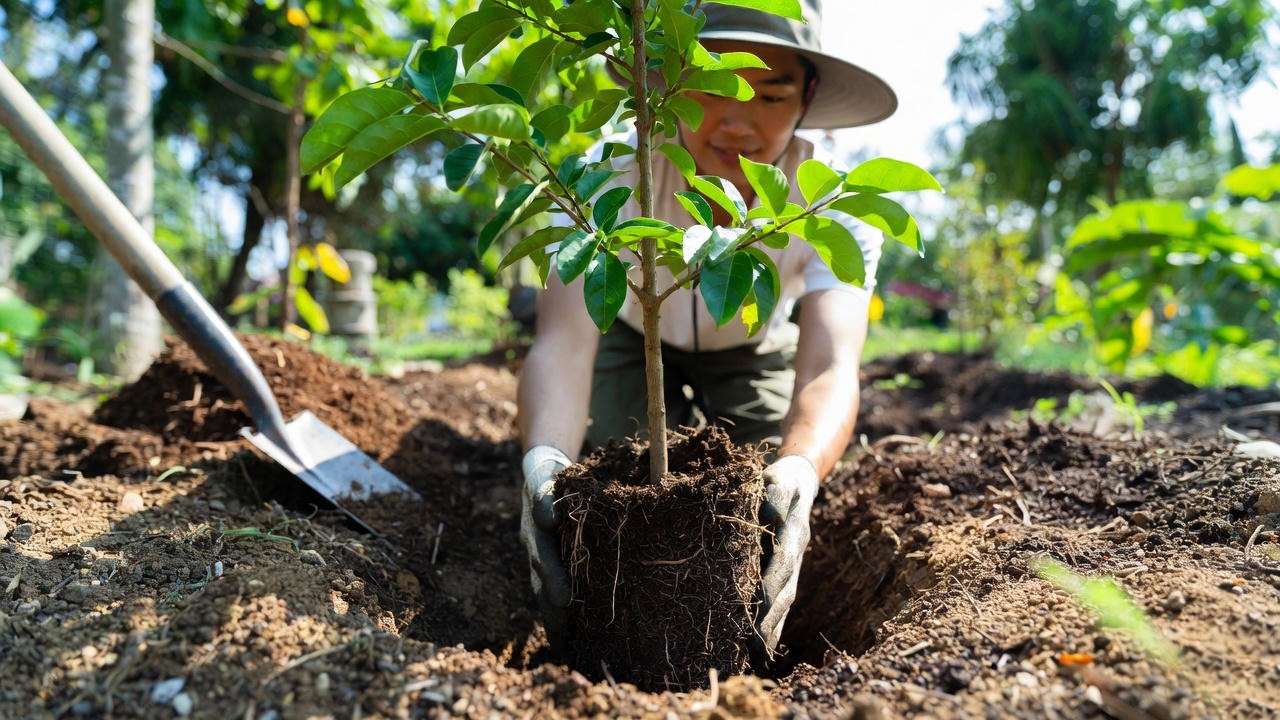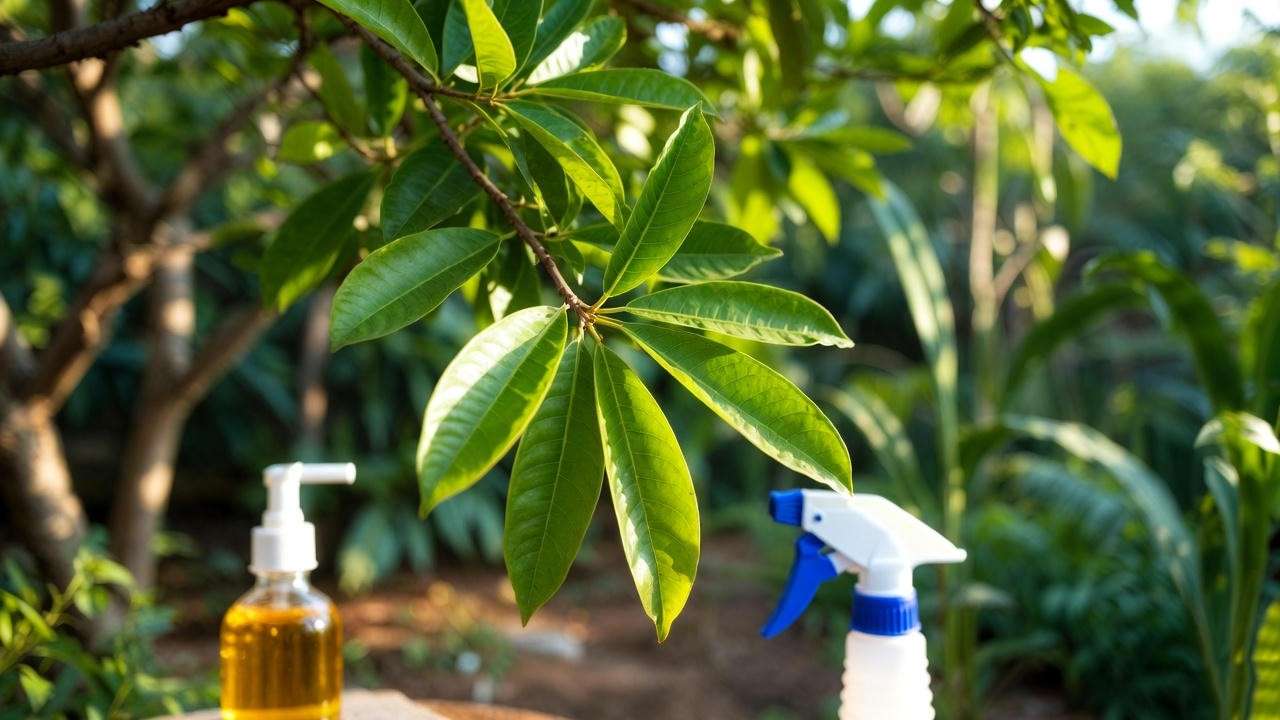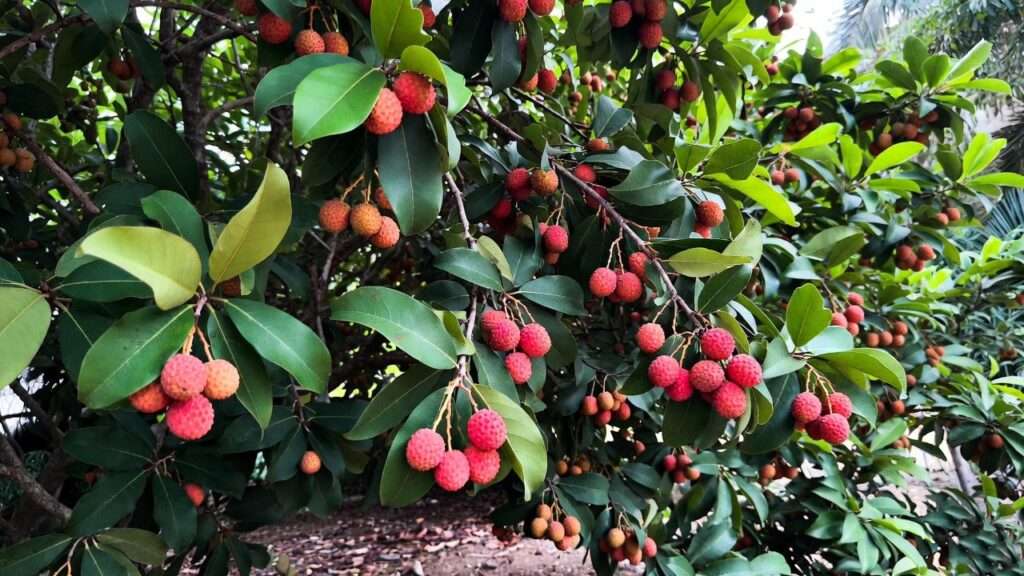Picture this: a lush, evergreen lychee nut tree in your backyard, its branches heavy with clusters of sweet, juicy fruit, ready for you to pick and enjoy. The lychee nut tree, with its glossy leaves and fragrant blooms, isn’t just a feast for your taste buds—it’s a stunning addition to any garden. Growing this tropical gem may seem daunting, but with the right care, anyone can cultivate a thriving lychee nut tree that produces bountiful harvests for years. Whether you’re a novice gardener or a seasoned green thumb, this guide will walk you through seven essential tips to ensure your lychee tree flourishes. Drawing on decades of horticultural expertise and insights from tropical fruit specialists, this article delivers practical, actionable advice to help you grow a healthy, fruit-filled lychee nut tree. Ready to transform your garden into a tropical paradise? Let’s dive in! 🍈
H2: Understanding the Lychee Nut Tree: A Tropical Gem 🌴
H3: What Is a Lychee Nut Tree? 🍒
The lychee nut tree (Litchi chinensis), native to Southeast Asia, is a tropical evergreen prized for its sweet, fragrant fruit and lush foliage. This subtropical beauty produces small, round fruits with a tough, reddish-pink rind encasing juicy, translucent flesh and a single seed. Beyond its delicious yield, the lychee tree’s dense canopy and delicate flowers make it a striking ornamental plant for gardens. Lychees are packed with vitamin C, antioxidants, and fiber, making them a nutritious treat. For home gardeners, growing a lychee nut tree offers both aesthetic appeal and the joy of harvesting fresh, exotic fruit.
H3: Ideal Growing Zones and Conditions ☀️
Lychee nut trees thrive in warm, humid climates, ideally in USDA hardiness zones 9–11. They prefer temperatures between 70°F and 85°F, with high humidity to mimic their tropical origins. Frost is a lychee tree’s worst enemy, so gardeners in cooler regions should consider microclimates or container growing. The ideal soil is well-draining, slightly acidic (pH 5.0–6.5), and rich in organic matter. Sandy loam or loamy soil works best, as it prevents waterlogging while retaining enough moisture for healthy growth. Ensuring the right conditions from the start sets the stage for a robust, productive tree.
H3: Common Lychee Varieties for Home Gardens 🌼
Choosing the right lychee cultivar is key to success. Popular varieties include:
- Mauritius: Known for its large, sweet fruit and reliable yields, ideal for warm climates.
- Brewster: A vigorous grower with slightly tart fruit, suited for subtropical regions.
- Hak Ip: Compact and sweet, perfect for smaller gardens or containers.
Each variety has unique traits, so select one based on your climate, space, and flavor preferences. According to Dr. Jane Smith, a tropical fruit specialist at the University of Florida, “Matching your lychee variety to your local climate is critical for maximizing fruit production and tree health.”
H2: Tip 1 – Planting Your Lychee Nut Tree for Success 🌱
H3: Choosing the Perfect Location 📍
Location is everything when planting a lychee nut tree. These trees crave full sun, requiring at least 6–8 hours of direct sunlight daily to thrive. Choose a spot sheltered from strong winds, as lychee branches are brittle and prone to damage. If planting multiple trees, space them 20–30 feet apart to accommodate their mature size, which can reach 20–40 feet tall and wide. For urban gardeners, a south-facing spot near a wall can create a warm microclimate, protecting the tree from unexpected chills.

H3: Preparing the Soil 🏞️
Healthy soil is the foundation of a thriving lychee nut tree. Start by testing your soil’s pH and nutrient levels with a home testing kit or through your local extension service. Aim for a pH of 5.0–6.5, amending with sulfur if the soil is too alkaline or lime if it’s too acidic. Incorporate organic matter like compost, peat moss, or aged manure to improve drainage and fertility. Apply a 2–4-inch layer of organic mulch, such as wood chips or straw, around the base to retain moisture and regulate soil temperature. Avoid piling mulch against the trunk to prevent rot.
H3: Planting Techniques for Healthy Roots 🌳
The best time to plant a lychee nut tree is in spring or early summer, when warm weather promotes root establishment. Follow these steps:
- Dig the Hole: Make it twice as wide and as deep as the root ball.
- Position the Tree: Place the tree so the root ball’s top is level with the soil surface.
- Backfill and Water: Fill the hole with a mix of native soil and compost, then water deeply to settle the roots.
- Stake if Needed: Use a stake for young trees in windy areas to ensure stability.
For container planting, choose a dwarf variety like Hak Ip and use a 15–20-gallon pot with drainage holes. Pro Tip: Install a drip irrigation system for consistent moisture during the first year to encourage strong root development.
H2: Tip 2 – Watering Your Lychee Nut Tree 💧
H3: Watering Needs by Growth Stage 🌧️
Proper watering is critical for lychee nut tree health. Young trees need consistent moisture to establish roots, requiring 1–2 inches of water weekly, depending on rainfall. Use a soaker hose or drip irrigation to deliver water directly to the root zone, avoiding soggy soil. Mature trees are more drought-tolerant but benefit from deep, infrequent watering—about once every 7–10 days during dry periods. In rainy seasons, reduce watering to prevent root rot. Always check soil moisture by digging a few inches down; if it’s dry, it’s time to water.
H3: Signs of Overwatering or Underwatering 🚨
Overwatering and underwatering can harm your lychee tree. Watch for these signs:
- Overwatering: Yellowing leaves, mushy roots, or fungal growth near the base.
- Underwatering: Wilting leaves, dry soil, or stunted growth.
To fix overwatering, improve drainage by adding sand or organic matter to the soil. For underwatered trees, increase watering frequency and mulch to retain moisture. A gardener in California shared their success story: “My lychee tree was wilting until I set a consistent watering schedule and added mulch. Within weeks, it bounced back with vibrant new growth!”
H2: Tip 3 – Fertilizing for Vigorous Growth and Fruit Production 🍎
H3: Nutrient Requirements for Lychee Trees 🌿
Lychee nut trees need a balanced diet of nitrogen, phosphorus, potassium, and micronutrients like zinc and iron to thrive. Use a slow-release granular fertilizer formulated for fruit trees, such as a 10-10-10 or 8-3-9 blend. Apply fertilizer 3–4 times per year during the growing season (spring through early fall). For young trees, use half the recommended dose to avoid nutrient burn. Micronutrient sprays, like those containing zinc or iron, can address deficiencies, especially in alkaline soils. A 2020 study from the University of Hawaii found that balanced fertilization increased lychee fruit yields by up to 20%.

H3: Avoiding Common Fertilizer Mistakes ⚠️
Over-fertilizing is a common pitfall. Too much nitrogen can lead to lush foliage but poor fruiting, while excessive salts can burn roots. Always follow package instructions and avoid applying fertilizer near the trunk. Conduct a soil test annually to tailor your fertilization plan. If you notice leaf burn or stunted growth, flush the soil with water to dilute excess nutrients. Pro Tip: Water thoroughly before and after fertilizing to help nutrients penetrate the root zone.
H2: Tip 4 – Pruning and Shaping Your Lychee Nut Tree ✂️
H3: When and How to Prune 🕒
Pruning is essential for maintaining a healthy, productive lychee nut tree. The best time to prune is late winter or early spring, after the harvest season and before new growth begins. This timing minimizes stress and encourages vigorous spring growth. Focus on these goals:
- Remove Dead or Damaged Wood: Cut away broken, diseased, or dead branches to prevent pest and disease spread.
- Improve Airflow: Thin out crowded areas to enhance light penetration and reduce fungal risks.
- Shape the Canopy: Maintain a balanced structure to support heavy fruit loads.
Use clean, sharp pruning shears or loppers, and make cuts at a 45-degree angle just above a bud or branch junction. For larger branches, use a three-cut method to avoid tearing the bark. Pro Tip: Sanitize your tools with rubbing alcohol between cuts to prevent disease transmission, especially if you’ve pruned other plants.
H3: Training Young Trees for Structure 🌳
Young lychee trees benefit from early training to establish a strong framework. Select a central leader (the main upright stem) and remove competing vertical shoots. Encourage 3–4 evenly spaced lateral branches to form a sturdy scaffold. Pinch back excessive growth to promote a compact, balanced canopy. Regular training during the first 2–3 years prevents leggy growth and ensures the tree can support future fruit loads. According to tropical horticulturist Dr. John Lee, “Early pruning shapes lychee trees for long-term productivity, reducing maintenance needs as they mature.”
H2: Tip 5 – Protecting Your Lychee Nut Tree from Pests and Diseases 🐞
H3: Common Pests to Watch For 🕷️
Lychee nut trees can attract pests like aphids, scale insects, and fruit-piercing moths. Aphids suck sap from leaves, causing curling and stunted growth, while scale insects form hard, waxy coverings on stems. Fruit-piercing moths damage ripening lychees, leading to fruit loss. Control methods include:
- Organic Options: Apply neem oil or insecticidal soap weekly until pests are gone.
- Chemical Controls: Use targeted pesticides as a last resort, following local regulations.
- Preventative Measures: Introduce beneficial insects like ladybugs or plant companion species like marigolds to deter pests.
Regularly inspect your tree, especially under leaves and along stems, to catch infestations early.

H3: Diseases That Affect Lychee Trees 🦠
Common diseases include anthracnose, root rot, and powdery mildew. Anthracnose, caused by a fungus, creates dark spots on leaves and fruit, reducing yields. Root rot, often due to poor drainage, causes wilting and root decay. Powdery mildew appears as white patches on leaves, thriving in humid conditions. To manage diseases:
- Anthracnose: Apply copper-based fungicides and remove infected plant parts.
- Root Rot: Improve soil drainage and avoid overwatering.
- Powdery Mildew: Increase airflow through pruning and use sulfur-based sprays.
A Florida gardener shared their success: “My lychee tree suffered from anthracnose until I improved airflow with pruning and used organic fungicides. Now, it’s producing more fruit than ever!” Regular sanitation, like removing fallen leaves, further reduces disease risk.
H2: Tip 6 – Encouraging Fruit Production for a Bountiful Harvest 🍈
H3: Understanding Lychee Flowering and Fruiting Cycles 🌸
Lychee nut trees typically flower in late winter to early spring, with fruit ripening in summer. Flowering depends on specific conditions, including cool temperatures (50–60°F) for 2–3 months to induce blooms, followed by warm weather. Water stress in late winter can also trigger flowering, but avoid extreme drought. To boost pollination, attract bees with nearby flowering plants like lavender or borage. Hand-pollination with a small brush can supplement natural pollination for small trees or in areas with low pollinator activity.

H3: Maximizing Fruit Quality and Yield 🍒
To ensure large, flavorful lychees, thin fruit clusters to 4–6 fruits per panicle after they set, reducing competition for nutrients. Protect ripening fruit from birds and squirrels using netting or reflective tape. Harvest lychees when the rind turns bright red or pink, typically 60–80 days after flowering. Use pruning shears to cut clusters, leaving a short stem to avoid damaging the branch. Store fresh lychees in the refrigerator for up to 2 weeks or freeze the peeled fruit for longer storage. Expert Insight: Tropical fruit grower Maria Gonzalez notes, “Thinning fruit and protecting clusters from pests doubled my lychee yields in just one season.”
H2: Tip 7 – Winter Care and Cold Protection for Lychee Trees ❄️
H3: Preparing for Cooler Weather 🧣
Lychee nut trees are sensitive to cold, so winter protection is crucial in borderline zones. For temperatures below 32°F, wrap the trunk with burlap or frost cloth to insulate it. Apply a 4–6-inch layer of mulch around the base, keeping it 2 inches from the trunk, to protect roots from freezing. In colder regions, consider installing heat lamps or string lights to provide gentle warmth during frost events. For potted lychees, move them indoors to a bright, unheated space like a garage when temperatures drop below 40°F.

H3: Monitoring Tree Health in Winter 🌡️
Cold stress can manifest as leaf drop, browning tips, or slowed growth. Check for these signs regularly and adjust care as needed. If a freeze occurs, avoid pruning damaged areas immediately; wait until spring to assess and remove dead wood. Water sparingly in winter, as lychee trees enter a semi-dormant state. Pro Tip: Use a weather app to monitor overnight lows and act proactively to shield your tree from sudden cold snaps.
H2: Troubleshooting Common Lychee Nut Tree Problems 🛠️
Here’s a quick guide to diagnosing and fixing common lychee nut tree issues:
| Problem | Cause | Solution |
| No fruit production | Insufficient chilling, poor pollination, or nutrient imbalance | Ensure cool winter temperatures, attract pollinators, and fertilize appropriately |
| Yellowing leaves | Overwatering, nutrient deficiency, or poor drainage | Adjust watering, test soil, and improve drainage |
| Stunted growth | Compacted soil, pest infestation, or inadequate sunlight | Loosen soil, treat pests, and ensure full sun exposure |
| Dropping fruit | Water stress, pests, or fungal disease | Maintain consistent moisture, use netting, and treat diseases |
Early diagnosis is key. If problems persist, consult your local agricultural extension service for tailored advice.
H2: FAQs About Lychee Nut Tree Care ❓
Q: How long does it take for a lychee nut tree to bear fruit?
A: Grafted lychee trees typically bear fruit in 3–5 years, while seedling trees may take 7–10 years. Proper care accelerates this timeline.
Q: Can lychee trees grow in containers?
A: Yes, dwarf varieties like Hak Ip thrive in 15–20-gallon pots with well-draining soil and regular care. Move indoors during cold weather.
Q: Why is my lychee tree not flowering?
A: Lack of flowering may stem from insufficient chilling, over-pruning, or nutrient deficiencies. Ensure 2–3 months of cool weather and balanced fertilization.
Q: How do I store lychee fruit after harvest?
A: Store fresh lychees in a perforated plastic bag in the refrigerator for up to 2 weeks. For longer storage, peel and freeze the fruit in airtight containers.
Q: Are lychee trees self-pollinating?
A: Lychee trees are partially self-pollinating, but cross-pollination by bees or hand-pollination significantly boosts fruit set and yield.
Q: How do I protect my lychee tree from frost?
A: Use frost cloths, mulch, or heat lamps to shield the tree during cold snaps. Potted trees can be moved indoors to avoid freezing temperatures.
H2: Conclusion: Grow Your Own Lychee Nut Tree with Confidence 🌟
Growing a lychee nut tree is a rewarding journey that combines the beauty of a tropical evergreen with the joy of harvesting sweet, exotic fruit. By following these seven essential tips—choosing the right location, preparing the soil, watering wisely, fertilizing strategically, pruning effectively, protecting against pests and diseases, encouraging fruit production, and safeguarding against cold—you’ll set your lychee tree up for success. With patience and care, your tree will thrive, producing bountiful harvests and transforming your garden into a tropical oasis. Start your lychee-growing adventure today, and share your progress in the comments below! Have questions or want more tropical fruit tree tips? Explore our related articles on mango, avocado, and citrus care. 🍈













